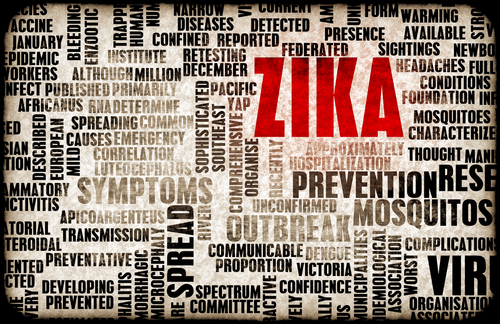Top pointers as Zika Virus Infection strikes India for the First-time
M3 India newsdesk Jun 20, 2017
There is a high potential for Zika virus emergence in urban centers in the tropics that are infested with competent mosquito vectors such as Aedes aegypti and Aedes albopictus.

Zika’s First Targets in India: When and Where?
The first three laboratory-confirmed cases of Zika virus infection in India were publicly declared on 15th May 2017, by the Ministry of Health and Family Welfare (MoHFW)-Government of India. These cases were reported in Bapunagar area of the Ahmedabad District of Gujarat at BJMC hospital.
A Brief Look at the Zika-positive Cases Confirmed at BJMC, Ahmedabad
Case 1: A 34-year-old lady who delivered a healthy baby on 9th Nov 2017 and subsequently developed low grade fever while she was hospitalized. During the laboratory work-up, Zika virus infection was confirmed.
Case 2: A 22-year-old pregnant girl, in her 37th week of pregnancy, tested positive for Zika virus infection.
Case 3: A 64-year-old male presenting with febrile illness of 8 days’ duration (negative for dengue infection), tested positive for Zika virus.
The cause and clinical picture of Zika infection: A mosquito-borne disease, an elusive fever
The virus is transmitted by Aedes aegypti mosquito, the same mosquito that transmits dengue and chikungunya. The virus has been named after the Zika forest in Uganda, where it was first discovered.
Clinically, Zika infection is elusive as it has vague clinical manifestations resembling a flu like illness comprising of low grade fever, joint ache, body ache and rash; all of these may last for a maximum of upto one week. However, only about 20% patients infected with Zika are symptomatic. This implies that in the vast majority of 70 to 80% cases, the infection is asymptomatic and often remains undetected.
Complications: Congenital anomalies and neurological disorders
Infections that go undetected may assume a potentially serious course. The most commonly reported complication of Zika infection in pregnant women is fetal microcephaly – unusually small size of the head of the fetus. It may also cause other psychomotor or cognitive derangements in the fetus. Hence, pregnant women are certainly a high-risk sub-group.
Zika has been associated with an increased risk of Guillaine Barre Syndrome and neurological disorders in infected adults.
The Diagnostic Work-Up
Patients presenting with a flu-like illness suggestive of a mosquito-borne fever should be considered for evaluation. These patients should be first tested for dengue and chikungunya. If both these tests turn out to be negative, the patient should be tested for Zika virus by RT-PCR, which is a confirmatory test.
There is NO specific treatment available!
Till date, no vaccine or anti-viral agent has been developed to treat the Zika infection. The clinical management comprises rest and fluids to prevent dehydration and paracetamol (acetaminophen) to relieve fever and pain.
Prevention is better than cure
This is especially true in the case of Zika infections, as prevention assumes paramount importance in the absence of specific treatment. Clinicians, regulatory authorities and community groups need to emphasize on educating patients about the necessary precautions to protect against Zika infections.
Precautionary measures to safeguard against Zika
Steps to reduce mosquito population by reducing the breeding sites of Aedes mosquito
- Minimizing human-mosquito interaction
- Use of mosquito repellents indoor and at a community level
- Personal protection, biological and chemical control at household, community and institutional levels
- Use of mosquito nets, wearing clothes that cover maximum parts of the body
- Preventing any pooling or stagnation of water
- Exercising tight precautions particularly during an outbreak or whenever the regulatory authorities sound an alert
- Educating tourists and travelers to exercise all necessary precautions
- Vigilance and mass awareness: The need of the hour
India is a country with a high birth rate and pregnant women are highly vulnerable to the fetal complications of Zika infection. India is also a country that seems conducive to the growth of the Aedes Egypti breed of mosquitoes. Thus, Zika poses a definite threat to the Indian population and hence mass awareness programs and safety drives at a community level have emerged as a promising strategy to safeguard.
References:
- WHO Report
- Indian J Med Res. 2016 May; 143(5): 553–564.
-
Exclusive Write-ups & Webinars by KOLs
-
Daily Quiz by specialty
-
Paid Market Research Surveys
-
Case discussions, News & Journals' summaries
